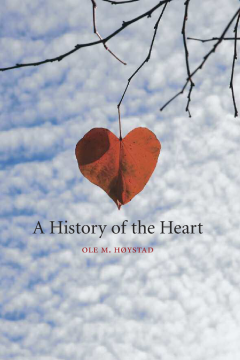
Additional Information
Book Details
Abstract
“My heart is a lonely hunter that hunts on a lonely hill.” “The heart has reason that reason cannot know.” “The more I get to know President Putin, the more I get to see his heart and soul.” The heart not only drives our physical life, but throughout human history it has also been viewed at the seat of our deepest emotions. It has figured hugely—if metaphorically—in nearly every aspect of human civilization and as the unending subject of literature, music, and art. Yet until now there has not been a study of this paramount icon of love. Ole Høystad ably fills this enormous gap with a fascinating investigation into this locus of grief, joy, and power. Firmly positioning the heart at the metaphorical and literal center of human culture and history, Høystad weaves history, myth, and science together into a compelling narrative. He combs through religions and philosophies from the beginning of civilization to explore such disparate historical points as the Aztec ritual of removing the still-beating heart from a living sacrificial victim and offering it to the gods; homosexuality and the heart in Greek antiquity; European attempts to employ alchemy in service of the mysteries of love; and the connections between the heart and wisdom in Sufism. Høystad charts how the heart has signified our essential desires, whether for love and passion in the medieval excesses of troubadour poetry and chivalric idealism, the body-soul dualism propounded by the Enlightenment, or even the modern notions of individualism expressed in the works of such thinkers as Nietzsche, Foucault, and Joseph Campbell.
A provocative examination of the deepest vaults of our souls and the efforts of the many lonely hunters who have tried to unlock its secrets, A History of Heart upends the clichés to reveal a symbol of our fundamental humanity whose beats can be felt in every aspect of our lives.
“A History of the Heart is about far more than the changing representation of the most charismatic organ. The ease with which the central storyline opens into a wide-ranging intellectual history of Western culture is the book's chief delight and major achievement. . . . A beautifully presented volume.”—Times Higher Education Supplement"A History of the Heart is about far more than the changing representation of the most charismatic organ. The ease with which the central storyline opens into a wide-ranging intellectual history of Western culture is the book's chief delight and major achievement. . . . A beautifully presented volume. . . . Høystad does well to guide the reader towards an understanding of how erotic and spiritual love became sharply separate yet powerfully interdependent forces, and how passion and suffering became integral to the sublimination of desire."—Times Higher Education Supplement — Lynne Pearce, Times Higher Education Supplement
"The book is a cultural account of the heart in primarily Western civilization. . . . A bonus is the inclusion of 20 color illustrations including Aztec drawings, artwork by Matisse and Munch, and a dazzling painting by Jose de Paez. . . . Informative and eye-opening." — Tony Miksanek, Journal of the American Medical Association
"Høystad can play a linguistically subtle tune of scholarly brilliance."
— Neue Zürcher Zeitung"Høystad brings us to the essence of mankind."
— Die Zeit"An entertaining, clearly written and knowledgeable tour de force through European intellectual history."
— Süddeutsche Zeitung"Contains some worthwhile analysis and conjecture." — C.E. O'Neill, Choice
Ole M. Høystad is professor of cultural studies and literature at Telemark University College in Norway.
